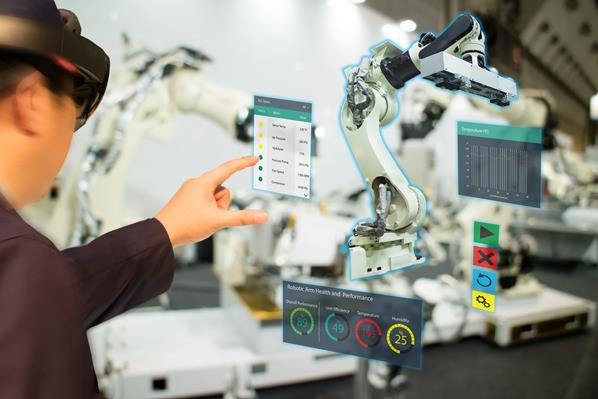
Implementing industrial robots within a manufacturing setting can be an arduous task. There are various logistical and financial factors to consider before you can leverage a robot to automate your operations.
Small industrial robots are designed to execute a vast range of tasks. Still, manufacturers face nearly the same challenges when it comes to their implementation.
For instance, the manufacturing sector is facing a shortage of labor which also has an impact on the skills gap in the industry.
Many experienced workers are either moving to less strenuous jobs or retiring. This explains why the lack of talent in the manufacturing industry will continue in the future.
The fact that hardly any new workers have the same expertise and knowledge as their predecessors can worsen the situation. Gone are the days when manufacturers had easy access to skilled and experienced workforce.
What’s the Role of Robots in Employee Retention?
Manufacturing companies can leverage robots to eliminate dirty, dull, and dangerous tasks. Robots come in handy to take over repetitive tasks.
This helps the workers to focus on more valuable tasks without being depressed about their safety. This will not only make them more fulfilled, but it will also motivate them to stay longer.
New Generation Robotic Safety Features
Sensors have changed transformed the robotics industry. With these safety features, small industrial robots can recognize when human workers get too close while in operation. They then proceed to either shut down or slow down to prevent injuries.
Human workers have no reason to be anxious about their safety anymore. Robotic safety features come in handy to facilitate robot-human collaboration and promote safety.
How do Collaborative Robots Compare with Conventional Robots in terms of Production?
This depends on the collaborative type of the application and the phase of collaboration. Regardless of the type of robots, it should operate at a safe speed when working in collaboration with humans.
Collaborative robots are specially designed to be less powerful. This means that their operating speed is restricted and they hardly cause harm.
Cobots are safe albeit compromised. Even when you consider surrounding them with a fence, you need to understand that their speed is dictated by their robustness.
Many times this limits their ability to execute tasks fast. Standard small industrial robots, on the other hand, are not designed to collaborate with workers.
Further, they don’t have force and power limitations. This means that you can operate them as fast as your application dictates.
Rather than using physical guards to separate the robot from humans, you can incorporate sensors to recognize the human presence and restrict robot motion until they leave.
What’s the Role of Robots in Addressing Labor Shortage?
Robots are ideal when it comes to filling the gaps created by a lack of skilled workers on the manufacturing floor. They motivate employees to assume more challenging tasks such as; quality management and production strategy.
As manufacturers grapple with recruiting new employees, robots can help relieve some of the production challenges. They can achieve this by executing tedious, repetitive, and time-consuming tasks.
Increased use of Advanced Mobile Robotics
The use of advanced mobile robotics is on the rise today. They come in handy in areas where conventional robots are viewed as a static process to make them mobile.
Mobile robots are designed to aid the transportation of equipment and parts from one area to the other. This helps manufacturers to use them in different applications.
How do Robots help Manufacturers Cope with the Retiring Employees?
Some employees in the manufacturing sector can’t execute demanding tasks. This is where robots can come in handy to assist with palletizing, heavy payloads, and transferring products across the factory floor.
This way, older employees are protected from injuries and they can use their free time to mentor the younger employees.
Finally
The robotics industry continues to evolve. However, more needs to be done to ensure that manufacturers overcome the challenges they face in the industry.




